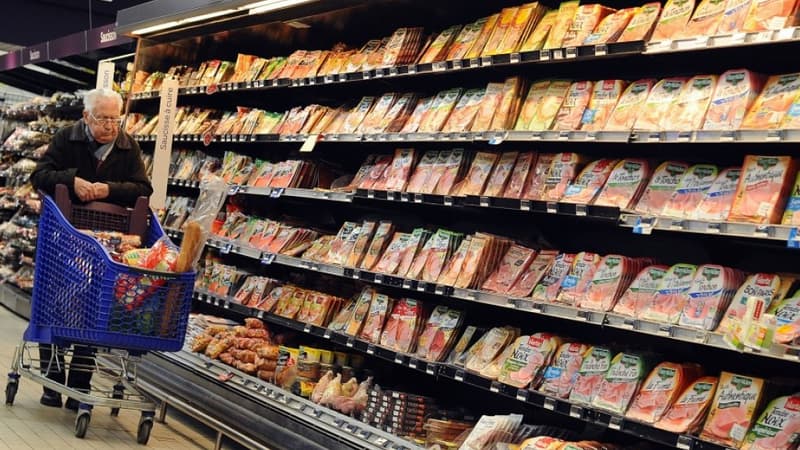For several days, it no longer goes unnoticed. The anti-inflation basket, in force since last Wednesday in large stores in France, is prominently displayed in a Carrefour store in Villeneuve-la-Garenne (Hauts-de-Seine), where a team of bfm tv.
fixed price baskets
The device is clearly displayed at the entrance of the supermarket. One sign conjures up a basket of “essentials and nutrition,” with prices locked in on “100 essentials” and “100 nutri-score A and B products” until June 22.
Enough to attract certain customers, more than ever looking for the best prices in this period of inflation that is tightening household budgets.
However, for some customers, the choice of selected products can be disappointing:
New battle in the price war
Prices locked on a selection of products, but which had experienced strong inflation in recent weeks: +10% in one year, according to the UFC-Que Choisir association.
For supermarkets, it is also an opportunity to highlight distributor brands and gain revenue: “The placement of a blue, white and red anti-inflation label is likely to attract attention and purchases, even if there is no business around these products,” explains Gregory. Cart, director of the UFC-Que Choisir consumer observatory.
Among the brands, there are big names: Carrefour, Intermarché, Système U, Casino… They were present in Bercy at the beginning of March to confirm the participation of their stores in the “anti-inflation quarter”.
But some shy away from this operation, such as the Leclerc centers: “For some brands, we still don’t know if they are playing the game. For example, the three brands Leclerc, Lidl and Aldi, benefit from a good image with consumers, because they have low prices, so they do not need to establish an anti-inflation basket,” explains Olivier Dauvers, consumer journalist at RTL.
It remains to be seen in the coming weeks whether this operation will meet consumer expectations.
Source: BFM TV


